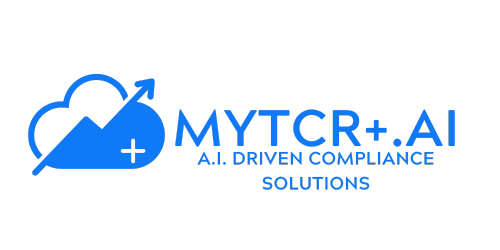In today’s digital landscape, businesses rely heavily on text messaging to connect with customers, but navigating the regulatory framework governing these communications can be challenging. One of the most significant developments in recent years is 10DLC, or 10-Digit Long Code messaging, which has fundamentally changed how businesses send Application-to-Person (A2P) messages in the United States. Understanding this system has become essential for any organization that depends on SMS communication to reach customers, clients, or stakeholders effectively.
Understanding Application-to-Person Messaging
Application-to-Person messaging refers to automated text messages sent from a business application to an individual’s mobile device. These messages include everything from appointment reminders and shipping notifications to marketing promotions and two-factor authentication codes. Unlike traditional person-to-person texts, A2P messages originate from software platforms rather than individual phones, making them essential for businesses operating at scale.
The evolution of A2P messaging reflects broader changes in how consumers prefer to interact with businesses. Text messaging boasts remarkably high open rates compared to email, with most messages read within minutes of receipt. This immediacy makes SMS an invaluable channel for time-sensitive communications, whether notifying customers about delivery updates, sending security alerts, or confirming appointments. The challenge has always been balancing this powerful communication tool with the need to protect consumers from spam and maintain network integrity.
The Problem 10DLC Solves
The telecommunications industry introduced 10DLC to address growing concerns about spam, fraud, and network congestion caused by businesses using standard 10-digit phone numbers for high-volume messaging. Before 10DLC registration became mandatory, companies often repurposed regular local phone numbers for bulk messaging, leading to carrier filtering and inconsistent delivery rates. This created a problematic environment where legitimate business messages might be blocked while spam found ways to slip through, frustrating both businesses and consumers.
The previous system lacked adequate mechanisms for carriers to distinguish between legitimate business communications and fraudulent messages. Bad actors could easily obtain phone numbers and blast thousands of unwanted texts before being shut down, only to start again with new numbers. Meanwhile, legitimate businesses struggled with unpredictable delivery rates and had limited recourse when their messages failed to reach customers. The situation had become untenable, demanding a comprehensive solution that would protect consumers without crippling business communications.
Network congestion presented another significant challenge. High-volume messaging through systems not designed for such usage created technical bottlenecks that could affect overall network performance. Carriers needed a way to identify, monitor, and manage business messaging traffic separately from person-to-person communications, ensuring that network resources could be allocated appropriately and that quality of service remained high for all users.
How 10DLC Registration Works
The registration process involves multiple layers of verification designed to establish trust and accountability throughout the messaging ecosystem. Businesses must first register with The Campaign Registry (TCR), providing details about their company structure, tax identification, and business operations. This establishes what’s known as a Brand identity in the system, creating a verified business profile that carriers can reference when evaluating message traffic.
The brand registration process requires organizations to submit substantial documentation proving their legitimacy. This typically includes federal tax ID numbers, business formation documents, and information about the company’s operations and ownership structure. The system performs various verification checks, cross-referencing submitted information against government databases and commercial records to confirm that the business is real and operates legally. This vetting process creates a foundation of trust that benefits both the business and the carriers who will ultimately deliver their messages.
Following brand registration, companies must register each distinct use case or campaign, describing the type of messages they’ll send and their intended purpose. This granular approach allows carriers to understand not just who is sending messages, but what those messages contain and why they’re being sent. Campaign registration requires businesses to provide sample message content, explain their opt-in process, detail how customers can opt out, and specify message volume expectations. This transparency enables carriers to make informed decisions about how to handle traffic from each campaign.
Carriers evaluate these registrations and assign trust scores that directly impact messaging throughput and filtering decisions. These scores consider numerous factors, including the business’s industry, its history of compliance, the quality of its registration documentation, and third-party reputation data. Higher trust scores translate to better treatment by carrier networks, including higher throughput limits and reduced filtering. Businesses in certain industries considered higher risk, such as cannabis or debt collection, may face additional scrutiny regardless of their actual practices, reflecting carrier policies designed to protect consumers in vulnerable situations.
The Benefits of Proper 10DLC Implementation
One of the most significant advantages of proper 10DLC registration is improved deliverability. Registered campaigns experience higher success rates because carriers can verify the legitimacy of the sender and the appropriateness of the content. This transparency creates a virtuous cycle where good actors are rewarded with better service, while bad actors find it increasingly difficult to abuse the system. For businesses, this means greater confidence that critical messages will reach their intended recipients, reducing the need for redundant communications through other channels.
Additionally, businesses gain access to higher throughput limits compared to unregistered long codes, though these limits remain lower than short codes, which are typically five or six-digit numbers reserved for high-volume messaging. The specific throughput available depends on the trust score assigned to the brand and campaign, with well-established businesses in low-risk industries potentially achieving substantial message volumes. While these rates may not match the blazing speed of short codes, they prove more than adequate for most business use cases while maintaining the advantage of using familiar 10-digit phone numbers that consumers recognize as standard phone numbers.
The use of 10-digit numbers rather than short codes offers meaningful benefits beyond just registration requirements. Consumers perceive 10-digit numbers as more personal and legitimate compared to short codes, which are often associated with marketing messages. This perception can improve engagement rates and reduce the likelihood that recipients will ignore or block messages. Additionally, 10-digit numbers support two-way conversations more naturally, allowing customers to reply to messages and engage in back-and-forth communication that enhances the customer experience.
Understanding the Cost Structure
The cost structure of 10DLC includes registration fees for both brands and campaigns, along with carrier-specific fees that vary by provider. While this represents an additional expense compared to previous practices, the investment typically pays dividends through better delivery rates and reduced message filtering. Businesses should view these fees not as pure costs but as investments in reliable communication infrastructure that protects revenue and customer relationships.
Brand registration fees are typically one-time or annual charges that vary based on the type of business entity and the vetting level selected. Standard vetting suits most established businesses, while newer companies or those in certain industries might require more extensive verification processes that carry higher fees. Campaign registration fees apply to each individual campaign or use case, with ongoing monthly carrier fees that scale based on message volume and the number of carriers requiring access to the campaigns.
Companies that fail to register face increasingly strict filtering by carriers, with many unregistered A2P messages being blocked entirely. This represents a far more significant cost than registration fees, as blocked messages mean lost revenue, frustrated customers, and damage to business operations. The days of informal, unregistered business texting are effectively over, making proper 10DLC implementation a business necessity rather than an optional enhancement.
Compliance and Best Practices
Understanding compliance requirements is crucial for successful 10DLC implementation. Businesses must adhere to TCPA regulations, obtain proper consent before messaging consumers, and provide clear opt-out mechanisms. The Telephone Consumer Protection Act establishes foundational rules for business communications, requiring express written consent for marketing messages and setting strict standards for how businesses collect and document that consent. Violations of TCPA can result in substantial penalties, making compliance both a legal necessity and a business imperative.
The content of messages should align with the registered use case, as carriers may flag campaigns that deviate from their stated purpose. If you register a campaign for appointment reminders but then start sending promotional content, carriers will likely detect this inconsistency and may suspend or filter your messages. Maintaining alignment between registered use cases and actual messaging practices requires internal discipline and oversight, ensuring that marketing teams, customer service representatives, and automated systems all respect the parameters established during campaign registration.
Obtaining proper consent represents perhaps the most critical compliance requirement. Businesses must be able to demonstrate that recipients explicitly agreed to receive messages, and this consent must be specific to the type of messages being sent. Generic privacy policy checkboxes buried in terms of service agreements typically don’t meet the standard for compliant consent. Instead, businesses need clear, conspicuous opt-in mechanisms that explain what messages recipients will receive, how frequently they’ll receive them, and how to stop them at any time.
Providing easy opt-out mechanisms isn’t just a best practice—it’s legally required. Every marketing message must include clear instructions for opting out, typically through a simple reply like “STOP” or “UNSUBSCRIBE.” These opt-out requests must be processed immediately, with no further messages sent to that number except a confirmation of the opt-out. Failing to honor opt-out requests quickly and completely invites regulatory action and damages customer relationships, undermining the very communication channel the business sought to leverage.
Navigating the Transition
For businesses transitioning to 10DLC, the process may seem daunting initially, but the long-term benefits of reliable message delivery and regulatory compliance make it an essential investment in modern customer communication infrastructure. The transition requires coordination across multiple business functions, from legal and compliance teams who ensure proper consent practices to technical teams who integrate with Campaign Service Providers and configure messaging platforms appropriately.
Starting the registration process well before you need to send messages is wise, as the vetting and approval process can take time. Brand registration might complete quickly for well-established companies with straightforward business structures, but more complex organizations or those requiring higher levels of vetting should allow several weeks. Campaign registration typically moves faster once brand registration is complete, but building buffer time into your planning ensures that registration delays don’t compromise critical business communications.
Working with experienced Campaign Service Providers streamlines the transition significantly. These intermediaries understand the nuances of 10DLC registration, can advise on optimal campaign configuration, and help navigate the inevitable questions and complications that arise. While it’s technically possible to manage 10DLC registration independently, most businesses find that working with knowledgeable partners accelerates the process and reduces the risk of costly mistakes.
The regulatory landscape surrounding business messaging continues to evolve, with 10DLC representing the current standard but certainly not the final word on how A2P communications will be managed. Businesses that establish strong compliance practices, maintain detailed documentation, and stay informed about regulatory changes position themselves to adapt as requirements shift. The core principles of transparency, consent, and respect for consumer preferences will remain central regardless of how specific technical requirements change.
Building a culture of compliance within your organization ensures that 10DLC registration is not just a one-time hurdle but the foundation of sustainable messaging practices. This means training staff on consent requirements, implementing systems that track opt-ins and opt-outs accurately, regularly auditing messaging practices to ensure alignment with registered use cases, and treating customer communication preferences with the seriousness they deserve. When compliance becomes embedded in organizational culture rather than an afterthought, businesses naturally make decisions that protect both their customers and their ability to communicate effectively.
The 10DLC framework ultimately serves everyone’s interests when implemented properly. Consumers receive fewer spam messages and greater control over business communications they receive. Carriers can manage network resources more efficiently and provide better service quality. Legitimate businesses gain reliable access to a powerful communication channel with predictable performance and costs. While the registration requirements add complexity compared to the informal messaging practices of the past, they create a more sustainable ecosystem that benefits all stakeholders over the long term.


